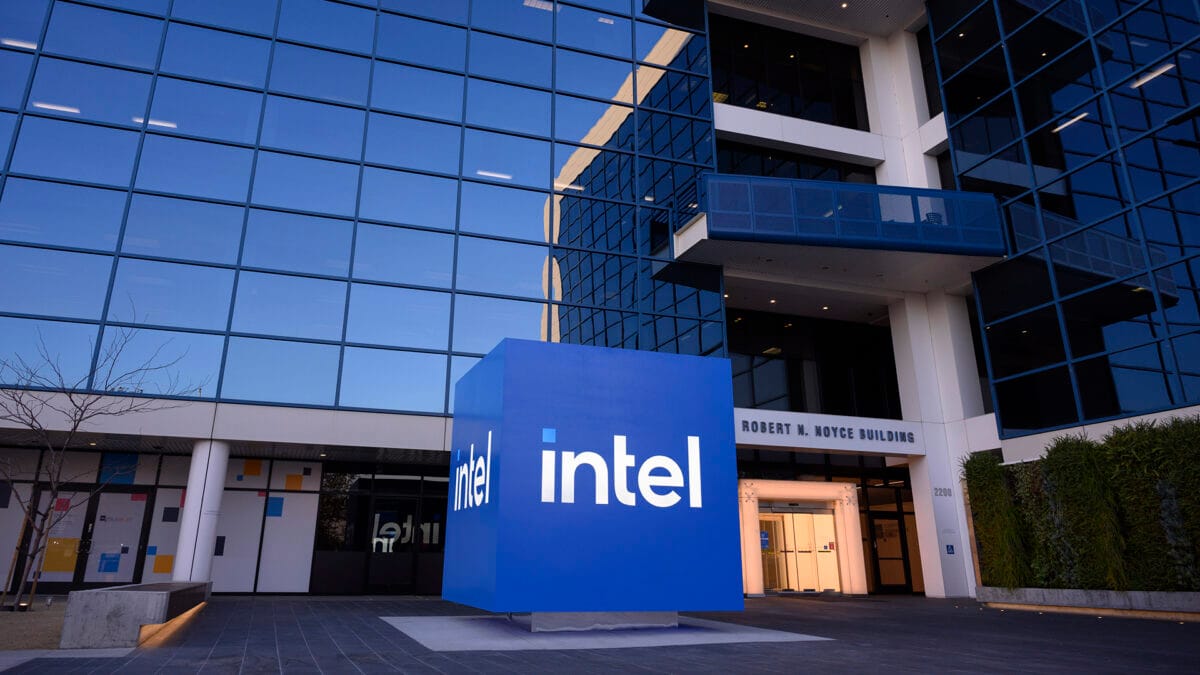The U.S. government will buy a 9.9% stake in Intel, marking an unusual move as the Biden-era CHIPS Act funding transforms into direct ownership of the struggling American chipmaker.
President Donald Trump announced the deal Friday after meeting with Intel CEO Lip-Bu Tan at the White House. “He walked in wanting to keep his job and he ended up giving us $10 billion for the United States,” Trump said.
Under the agreement, the government will invest $8.9 billion in Intel by purchasing 433.3 million shares at $20.47 per share. This money comes from $5.7 billion in unpaid CHIPS Act grants and $3.2 billion from the Secure Enclave program. Combined with $2.2 billion already given to Intel, total government support reaches $11.1 billion.
Commerce Secretary Howard Lutnick celebrated the deal on social media: “The United States of America now owns 10% of Intel, one of our great American technology companies.”
Intel’s stock jumped over 5% following the announcement.
The government’s stake will be passive, meaning it won’t get a board seat or control over company decisions. The government agreed to vote with Intel’s board on shareholder matters, with limited exceptions. A special five-year warrant would allow the government to buy an additional 5% of Intel if the company ever loses majority control of its foundry business.
The deal removes previous requirements for Intel to share profits or return money if certain goals weren’t met.
This unusual arrangement comes as Intel struggles financially, having lost $18.8 billion in 2024 – its first annual loss since 1986. The company has fallen behind competitors like Taiwan’s TSMC in manufacturing technology and Nvidia in artificial intelligence chips.
Similar Posts
The government stake in Intel follows other recent unusual deals by the Trump administration, including arrangements where Nvidia and AMD give the government 15% of revenue from certain chip sales to China.
Market experts remain cautious about Intel’s future despite the cash infusion. Daniel Morgan, senior portfolio manager at Synovus Trust, noted Intel’s problems go beyond money: “Without government support or another financially stronger partner, it will be difficult for Intel foundry unit to raise enough capital to continue to build out more Fabs at a reasonable rate.”
The deal hasn’t been welcomed by everyone. Some critics warn about government overreach, with concerns about “nationalization” and setting a precedent for more direct government ownership of private companies.
Intel says it plans to spend over $100 billion expanding its U.S. manufacturing facilities. Its Arizona chip factory is expected to begin high-volume production later this year.
Major tech companies have expressed support for the deal. Microsoft CEO Satya Nadella called the partnership between Intel and the government a showcase of “the very best of American ingenuity and innovation.” Dell’s Michael Dell and HP’s Enrique Lores also voiced support, emphasizing the importance of a strong U.S. semiconductor industry.
This deal comes just days after Japanese investment firm SoftBank announced a separate $2 billion investment in Intel, adding another vote of confidence in the company’s turnaround efforts.
The unprecedented government stake in Intel reflects a growing trend of industrial policy under the Trump administration, as Washington works to secure America’s position in critical technologies like semiconductors.






